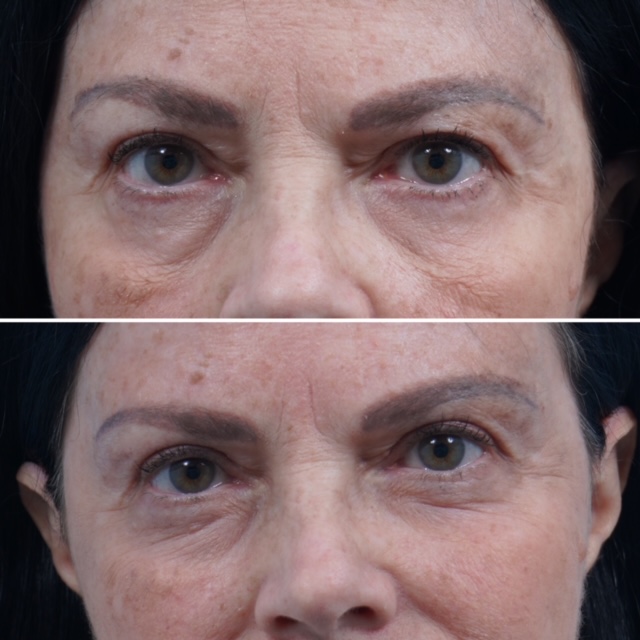
Blepharoplasty
Tired of looking tired?
Our eyes never lie and they can serve as a telltale reminder of our age. The skin of our upper eyelids can sag over time and droop over our eyes causing us to look tired and even obstructing our vision!
Our lower eyelids can also look puffy and swollen due to fat pads that become more prominent with age. And the cheek fat pad can also sink over time, leading to a fatigued look.
Done under light anesthesia, surgery can address both upper and lower eyelids or each individually by removing excess skin and repositioning fat for a refreshed and youthful look. Schedule your consultation to learn more!

Frequently Asked Questions
Anyone with excess skin and/or very apparent bulging of the lower eyelids is a candidate for a blepharoplasty! I will perform a full ocular assessment during your visit to determine if you qualify.
Upper blepharoplasty removes excess skin and fat from the upper eyelids and lifts the eyelids for a more youthful look, while lower blepharoplasty addresses puffiness and excess skin in the lower eyelids and improves the appearance of the tear trough, the sunken area between the lower eyelid and cheek.
Typically, pain after blepharoplasty is minimal and easily controlled with over-the-counter pain medications. The incision is hidden in your upper lid crease or right below your lower lash line so it is very inconspicuous. You will likely have redness of the incisions for a period of several months which will resolve with time. Once you receive clearance, you may wear makeup to hide this.
This is generally a well-tolerated, low-risk outpatient procedure. As with all surgical procedures, there is always a risk of pain, bleeding, and infection. There is a very small but serious risk of a blood collection or hematoma forming behind your eye. If you develop severe pain postoperatively associated with eye swelling, notify our office immediately.
Although eyelid surgery offers long-lasting results, the natural aging process continues, and excess eyelid skin may reappear after about 7 years, at which point you may get a brow lift.
If you experience visual obstruction as a result of hooding of your upper eyelid skin, your blepharoplasty may be covered by insurance. Typically, patients must undergo a taped and untaped visual field test by an optometrist to qualify. We can discuss this during your consultation.

Contact us
Say goodbye to tired eyes and hello to a more youthful appearance!




